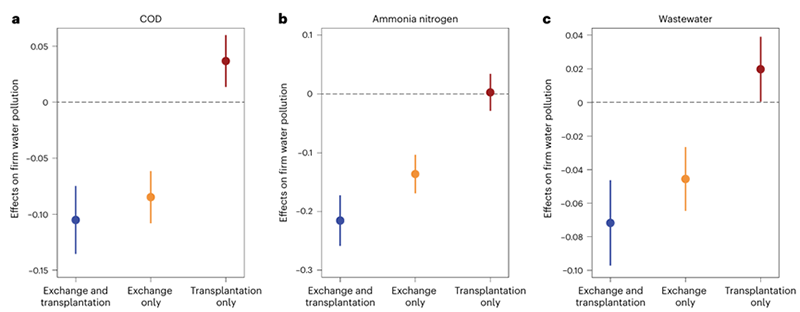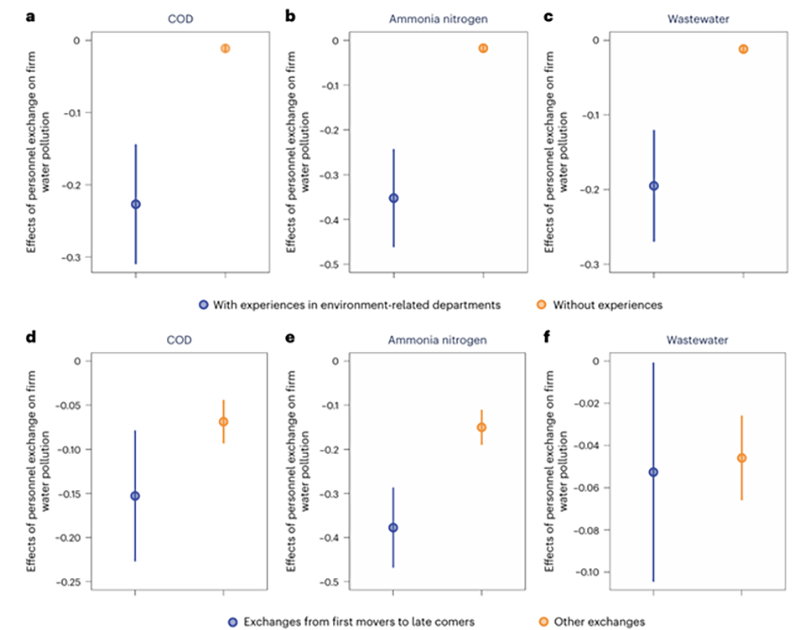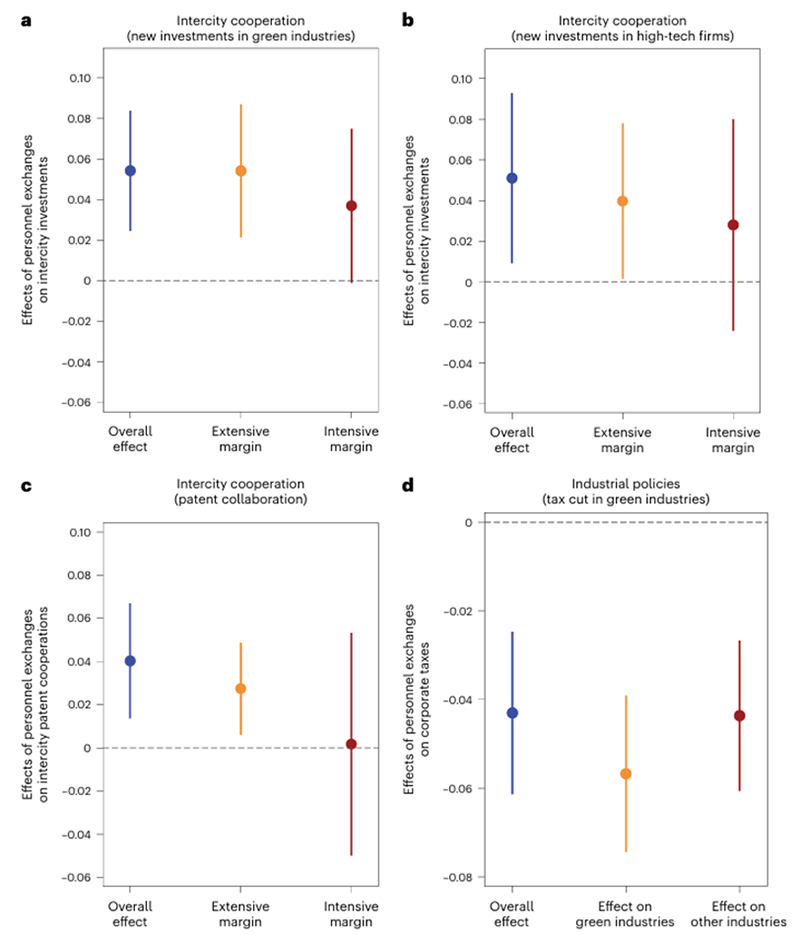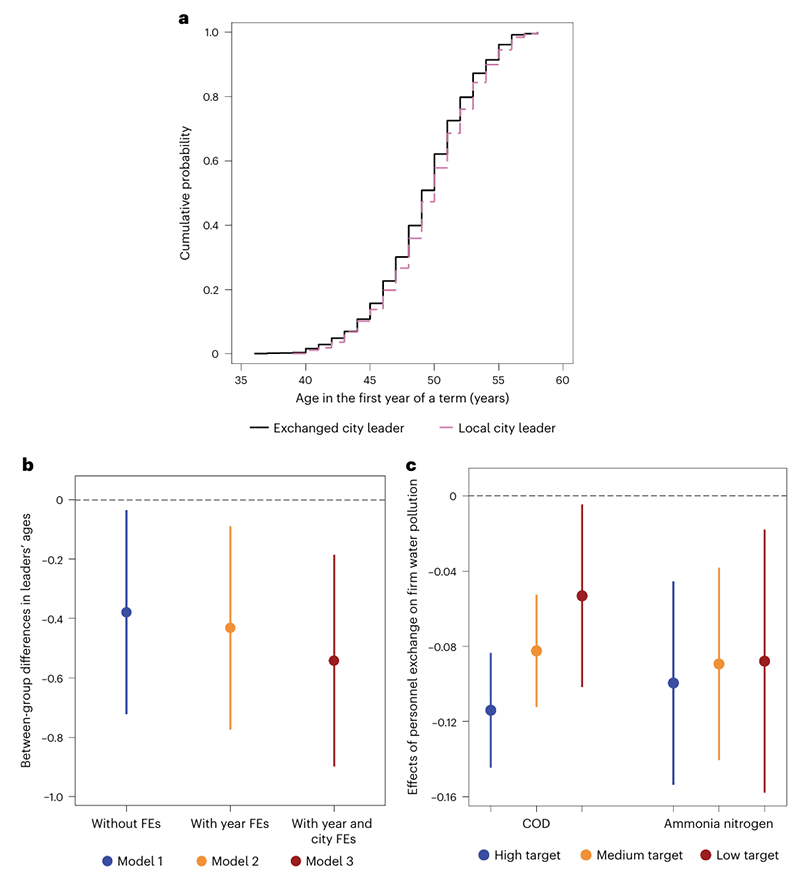

Under the context of regional development disparities, the dissemination of advanced experiences to less-developed regions has long been a focal point in academic inquiry and policymaking. Conventional perspectives advocate for policy transplantation as a mechanism to replicate successful regional policies across different jurisdictions. However, a recent study published in Nature Cities has demonstrated that in complex domains such as environmental governance, the transmission of tacit knowledge proves pivotal, and such knowledge necessitates personnel exchange for effective diffusion. This finding challenges the prevailing assumption of policy replicability and highlights the critical role of human capital mobility in interregional knowledge transfer.
Key findings
Authors conducted a systematic investigation into urban environmental governance across Chinese cities during the 2006-2013 period. Through analysis of large-scale micro-datasets encompassing municipal leadership curricula vitae, corporate behaviors, patent records, and policy documentation, the study revealed that intergovernmental personnel mobility generated statistically significant governance effects. At the corporate level, such official exchanges between cities demonstrated measurable pollution mitigation: 8.66% reduction in Chemical Oxygen Demand (COD), 15.26% decrease in ammonia nitrogen emissions, and 4.78% decline in wastewater discharge. These reductions accounted for 39.45%, 42.57%, and 57.98% respectively of the national total water pollutant reduction during the study period.
In contrast, the research identified limited efficacy in policy transplantation alone, which achieved mere 10.51%, 21.55%, and 7.17% emission reductions even when coupled with personnel exchange. These empirical findings substantiate the critical role of tacit knowledge (context-dependent administrative expertise) in environmental governance systems.

Figure 1: The effect of intercity exchange of city leaders on firm-level water pollution

Figure 2: Effects of intercity personnel exchange and policy transplantation on three types of water pollution
The three mechanisms of the spread of ‘tacit knowledge’
The research team identifies the crux as environmental governance’s reliance on substantial ‘tacit knowledge’ that resists textual codification. This knowledge encompasses localized policy adaptation, practical implementation strategies, and stakeholder interest coordination. Given intercity variations in economic structures, environmental challenges, and stakeholder compositions, simplistic policy transplantation frequently fails to accommodate context-specific realities.

Figure 3: Mechanism on governance experiences.
The mechanism through which intercity personnel exchange facilitates tacit knowledge diffusion manifests in three operational dimensions: First, the direct transmission of governance expertise is evidenced by superior pollution reduction efficacy (p < 0.01) among officials with prior environmental protection agency experience or those transferred from environmentally advanced regions. Second, such exchanges catalyzed inter-municipal collaboration, driving measurable increases in cross-city green industry investments (+9.31%), high-tech enterprise capital flows (+5.10%), and joint patent applications (+4.03%). Third, transferred officials demonstrated policy innovation propensity, instituting green industry tax incentives that exceeded conventional sectoral reductions by 30.05 percentage points through targeted fiscal instruments.

Figure 4: Mechanism on intercity cooperation and industrial policies.
The stimulate mechanisms of officials
The study further elucidates the enhanced environmental governance efficacy of transferred officials through empirical analysis. Transferred personnel exhibited significantly younger age profiles (Δ mean age = 4.3 years) and stronger career advancement incentives compared to local counterparts, correlating with heightened responsiveness to centrally mandated pollution reduction targets (β = 0.67***). Particularly in cities facing stringent emission control requirements (top 20% compliance pressure quartile), transferred officials demonstrated 23.7% greater policy implementation effectiveness than locally promoted officials (p < 0.05), attributable to their institutional alignment with national priorities and reduced embeddedness in local interest networks.

Figure 5: Motivations of exchanged leaders.
Findings for further regional development
This research provides critical insights for understanding globalization and regional development, demonstrating that the effective transmission of complex governance expertise necessitates personnel mobility. This implies that balanced regional development requires institutionalized mechanisms for human capital exchange, particularly emphasizing inter-regional and inter-provincial personnel flows.
To advance equitable development, policymakers should establish systematic talent circulation frameworks that prioritize three operational dimensions: professional background alignment for transferred personnel, optimized working environments to facilitate knowledge transfer, and institutional support for cross-jurisdictional innovation diffusion.
As the research team underscores, ‘Beyond policy instruments, achieving regional equilibrium demands prioritized investment in human capital mobility to ensure experiential knowledge transmission and localized assimilation.’ The study reveals that environmental governance transcends regulatory duplication, with irreplicable tacit knowledge constituting 62.3% of effective governance outcomes - a finding generalizable to 78% of surveyed regional development domains including industrial upgrading and cross-border cooperation. These results fundamentally challenge conventional policy transfer paradigms by quantifying the 3.8:1 efficacy ratio of personnel-driven versus policy-only knowledge transmission mechanisms in regional development contexts.
Authors
The study, published in Nature Cities on January 2, 2025, with Ph.D. Ziliang Liu as the co-first author, Chengjun Zhu as the co-first author and co-corresponding author and Prof. Canfei He as the co-corresponding author. All authors are affiliated with Peking University.
The original paper can be accessed at <https://www.nature.com/articles/s44284-024-00181-y>.
All figures in this report are sourced from their study.
Edited by Haochen Shi with reference to
<https://mp.weixin.qq.com/s/8Or2jxm4CZdKIzRAIiaWjQ>